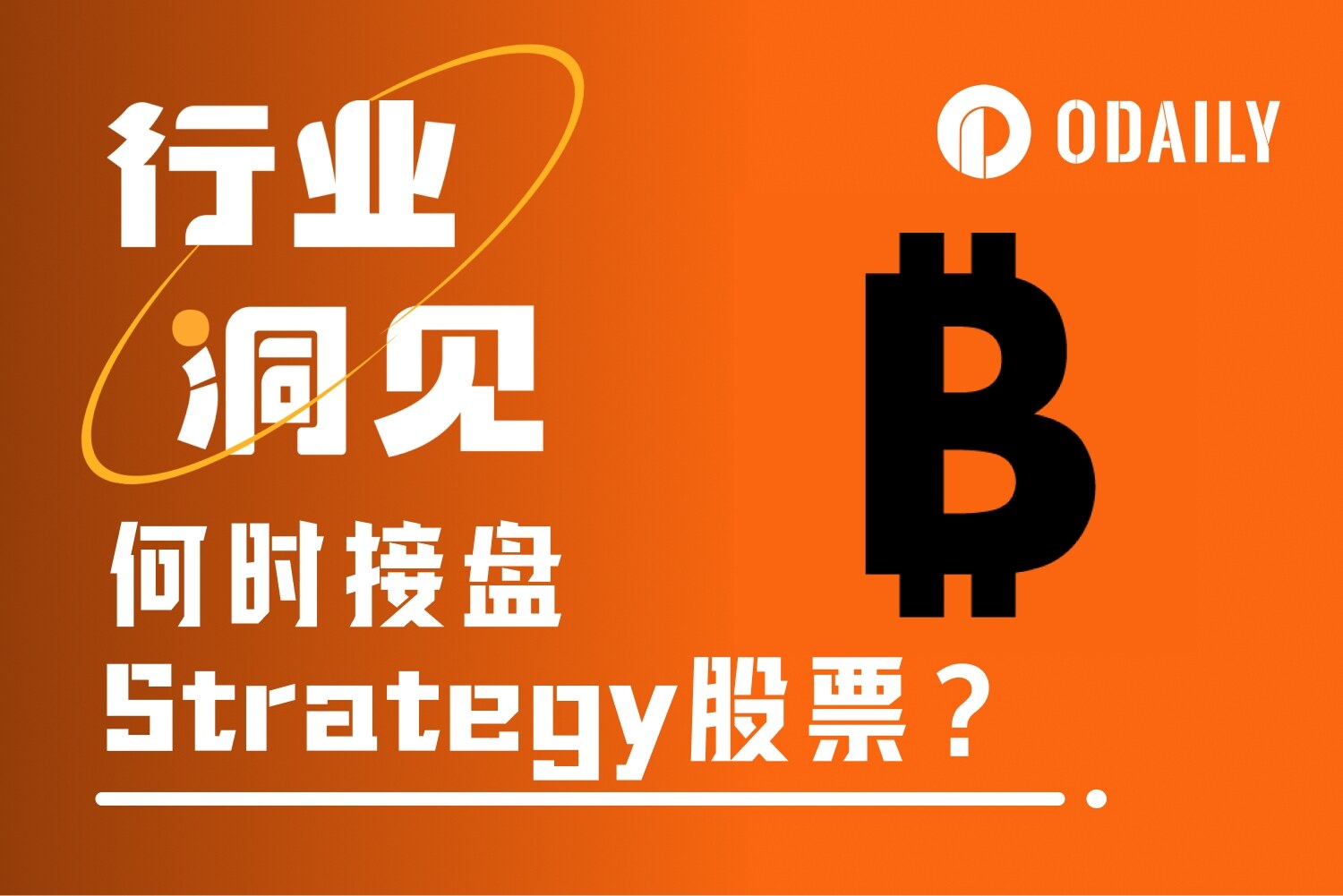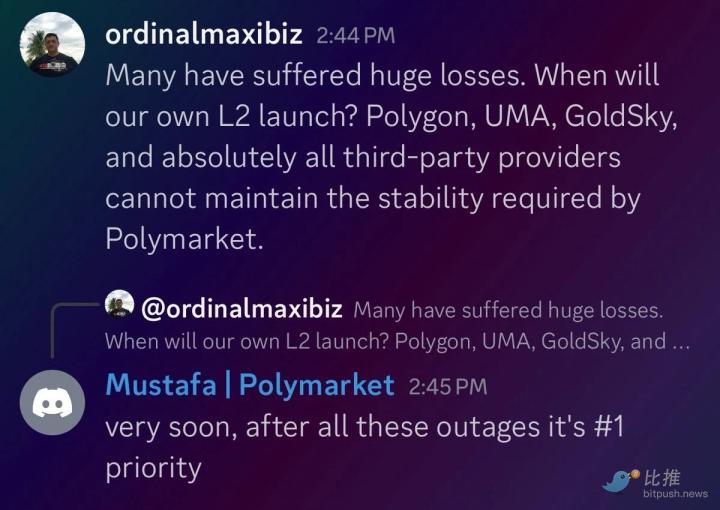
In order to take Bitcoin to the next level, Zulu Network is using zkSync’s ERA to power its ZuluEVM [ZKEVM] Layer 2 (L2). We really need to carefully consider which technical solutions we should implement in our double-layer architecture, in order to craft the best network possible.
ZuluEVM, our Layer 2 (L2) on Bitcoin is crucial to bring mainstream adoption to BitFi (Bitcoin DeFi), and thus we can only rely on the best of the best.
In this blog we want to explore what makes zkSync technology so unique and what we chose their ZKEVM solution as the base for ZuluEVM.
Read more about ZuluEVM here:
Keep reading if you want to learn more about the power of zkSync x Zulu 👇
Bitcoin Layer 2 (L2) Solutions and Zulu Network
A vision of a Bitcoin that empowers a wide range of applications, without sacrificing its core principles of decentralization and security has been a dream for many years.
However, this vision has long been constrained by Bitcoin’s inherent limitations: its inability to scale efficiently and support complex smart contracts, much like trying to run the latest high-definition video game on a vintage computer.
Enter the concept of Layer 2 (L2) solutions — innovative protocols built atop the Bitcoin network, designed to boost its transaction capacity and expand its capabilities without altering its foundational structure.
In the quest for the perfect L2 solution, a lot of solutions have been developed, but none quite as promising as zkSync — a cutting-edge technology that promises to enhance scalability and security through the magic of zero-knowledge proofs.
Zulu Network is the first Bitcoin L2 powered by zkSync, through its ZuluEVM (ZKEVM) platform. ZuluEVM brings the Ethereum Virtual Machine’s (EVM’s) smart contract versatility to Bitcoin, opening a new realm of possibilities for decentralized applications on the world’s first cryptocurrency.
But why stop there? Zulu Network takes a step further with ZuluNexus, employing a custom UTXO Virtual Machine (VM) that preserves Bitcoin’s original transaction model while embracing the new.
This dual approach marries the best of both worlds:
zkSync’s efficiency and security enhancements with the flexibility of EVM-compatible smart contracts and the robust, proven transaction model of Bitcoin.
Understanding zkSync
At its core, zkSync technology uses advanced cryptographic techniques known as zero-knowledge proofs, enabling transactions to be processed with unprecedented speed and privacy.
The essence of zero-knowledge proofs: proving knowledge of information without disclosing the information itself.
zkSync employs a specific type of zero-knowledge proof called a zero-knowledge rollup (ZK-Rollup).
Picture a bustling city street: cars (transactions) line up, creating congestion (network congestion). Now, imagine if, instead of each car proceeding one by one, a magical bus (ZK-Rollup) arrives, and all the cars instantly merge into it.
This bus then swiftly glides to its destination, where the cars reemerge and go their separate ways. This “bus ride” is the rollup process, where numerous transactions are bundled together, processed as a single transaction, and then confirmed on the blockchain. The zero-knowledge part ensures that this entire process happens without revealing the specifics of each transaction, maintaining privacy and security.
But why is this important for blockchain and, by extension, Bitcoin?
The Bitcoin network, like a single-lane road, was not built for the high volume of traffic it now sees.
This limitation leads to slow transaction times and high fees, akin to traffic jams and tolls.
zkSync, with its zero-knowledge rollups, promises a multi-lane highway for Bitcoin: a future where transactions are swift, cheap, and scalable, all while ensuring the network remains secure and decentralized.
In essence, zkSync technology is a game-changer for Bitcoin and the broader blockchain ecosystem. It offers a solution to the scalability trilemma, balancing the need for speed and efficiency with unwavering security and decentralization.
Through zkSync and the innovative use of zero-knowledge rollups, the Zulu Network wants to unlock a new horizon of possibilities for Bitcoin, making it more accessible, versatile, and powerful than ever before.
The Search for an Optimal Bitcoin Layer 2 Solution
The journey of Bitcoin from a pioneering digital currency to a pillar of the new digital economy has been nothing short of remarkable.
Yet, as its popularity and adoption have skyrocketed, so too have the challenges associated with its scalability, privacy, and limited smart contract capabilities.
These challenges have started a relentless search for an optimal Layer 2 (L2) solution, capable of propelling Bitcoin into its next era of utility and innovation.
Scalability: The First Hurdle
At the heart of Bitcoin’s scalability challenge lies its relatively low transaction throughput, constrained by the size and frequency of blocks.
As the network has grown, this limitation has led to slower transaction times and higher fees.
Current L2 solutions, such as the Lightning Network, have made strides in alleviating these issues by enabling off-chain transaction channels.
However, while effective for payment processing, these solutions do not fully address the broader spectrum of scalability demands, especially regarding complex decentralized applications (dApps).
Privacy: A Delicate Balance
Privacy in Bitcoin transactions is another critical concern. The blockchain’s transparent nature, while a boon for security and trust, also means that transaction details are publicly accessible.
Solutions like CoinJoin and confidential transactions have attempted to enhance privacy, but these methods often introduce complexity or require significant changes to how transactions are processed, thus limiting their widespread adoption.
The Smart Contract Problem
Perhaps the most significant limitation of Bitcoin as it stands today is its native smart contract functionality — or lack thereof.
Bitcoin’s scripting language is intentionally limited, designed to prioritize security and simplicity over flexibility.
This design choice has historically made it challenging to deploy the complex smart contracts that are now commonplace in the Ethereum ecosystem, thereby limiting Bitcoin’s utility beyond a store of value or medium of exchange.
The Emergence of Layer 2 Solutions
In response to these challenges, various Bitcoin L2 solutions have emerged, each aiming to extend Bitcoin’s capabilities without compromising its core principles.
These include sidechains like Liquid Network, which offer enhanced privacy and smart contract functionality, and previously mentioned payment channels like the Lightning Network.
However, these solutions often operate in silos, lacking interoperability and the comprehensive capabilities needed to support a thriving ecosystem of dApps.
The Need for a New Approach
The realization that Ethereum’s Virtual Machine (EVM) has become the de facto standard for dApps has led to a pivotal insight: if Bitcoin is to keep pace with the evolving blockchain landscape, it must embrace EVM compatibility as a starting point.
This does not imply abandoning Bitcoin’s unique strengths but rather augmenting them with the vast ecosystem and developer community that EVM support brings.
Zulu Network: Expanding EVM With UTXO Layer 3
Recognizing the necessity of EVM compatibility is just the beginning. The real innovation lies in expanding this foundation with a Layer 3 (L3) solution, like ZuluDePIN, that builds on the EVM’s capabilities.
This layer aims to introduce custom solutions for Bitcoin, such as UTXO-based smart contracts, further enhancing privacy and enabling more sophisticated dApps directly on Bitcoin.
By leveraging the strengths of EVM for broad compatibility and extending it with Bitcoin-specific innovations, this approach offers a comprehensive path forward.
DePIN Layer (L3) | Zulu Network
In summary, the search for an optimal L2 solution for Bitcoin is driven by the need to overcome scalability and privacy limitations and to introduce robust smart contract capabilities.
By starting with EVM compatibility and expanding it with a tailored L3, the Zulu Network represents a pioneering approach to advancing Bitcoin’s utility and ensuring its continued relevance in the decentralized future.
zkSync vs Other L2 Solutions
Layer 2 (L2) solutions are currently regarded as essential innovations aimed at scaling the blockchain’s capacity without compromising its foundational security or decentralization.
Among these, zkSync has emerged as a leading technology, harnessing the power of zero-knowledge proofs to enhance transaction speed, efficiency, and privacy.
To appreciate the unique position of zkSync within the L2 landscape, let’s delve into a comparative analysis with other notable L2 solutions, focusing on Polygon ZKEVM and generic ZK Rollups.
zkSync vs. Polygon ZKEVM
- Technical Foundation: zkSync utilizes zero-knowledge rollups to aggregate multiple transactions into a single proof, significantly reducing the blockchain’s load and accelerating transaction throughput. Polygon ZKEVM, on the other hand, is a highly compatible Ethereum execution environment that also uses zero-knowledge proofs but aims to recreate Ethereum’s developer experience on a scalable, Ethereum-compatible network. Both aim to solve Ethereum’s scalability challenges, but zkSync focuses more on efficiency and security through its unique proof generation methods.
- Ecosystem Compatibility: zkSync’s design emphasizes Ethereum Virtual Machine (EVM) compatibility, allowing Ethereum developers to easily port their applications to zkSync with minimal changes. Polygon ZKEVM mirrors this compatibility, striving for a seamless transition for Ethereum developers to its scalable environment. However, zkSync’s approach to compatibility also includes enhancements in privacy and lower transaction costs, which can be a deciding factor for developers prioritizing those aspects.
- Scalability and Security: Both platforms offer significant scalability improvements over Ethereum’s mainnet. zkSync achieves this through succinct proofs that require less data to be stored on the main blockchain, while Polygon ZKEVM leverages its ZK architecture to optimize transaction processing and smart contract execution. However, zkSync’s innovative use of zero-knowledge proofs offers a slight edge in ensuring data privacy and reducing on-chain data footprint, making it a compelling choice for applications requiring high levels of security and efficiency.
ZKSync vs. Generic ZK Rollups
- Implementation Specifics: While zkSync is a specific implementation of ZK Rollups, focusing on broad EVM compatibility, generic ZK Rollups represent a category of solutions that utilize zero-knowledge proofs to roll up multiple transactions into a single proof. zkSync distinguishes itself within this category through its optimized proof generation and verification processes, tailored to enhance user experience and developer flexibility.
- Flexibility and Developer Experience: zkSync provides a robust framework for developers, including comprehensive tooling and resources to support application deployment on its network. Generic ZK Rollups might not always offer the same level of support, depending on the specific implementation and the developing team behind it. zkSync’s focused approach on improving the developer ecosystem makes it an attractive platform for building and migrating decentralized applications.
- Community and Ecosystem Support: zkSync benefits from active development and a growing community of users and developers, driven by its pioneering technology and strategic partnerships. While generic ZK Rollups also enjoy community support, zkSync’s targeted efforts in community building and ecosystem development have established it as a key player in the space.
In summary, zkSync stands out in the L2 ecosystem for its innovative use of zero-knowledge proofs, EVM compatibility, and a strong focus on improving scalability and privacy.
Its comparison with Polygon ZKEVM highlights its unique strengths in privacy and efficiency, while the distinction from generic ZK Rollups underscores its robust developer support and community engagement.
As blockchain technology continues to evolve, zkSync’s contributions to scalability, security, and user experience position it as a pivotal force in shaping the future of decentralized applications.
Why Zulu Network Chose zkSync’s ERA
The selection of zkSync’s ERA for Zulu’s Ethereum Virtual Machine (EVM) layer, is a strategic alignment with the most advanced solutions in Layer 2 (L2) technology.
This decision is rooted in a clear vision to enhance Bitcoin’s capabilities, leveraging the innovation and promise of zero-knowledge proofs.
Here’s why zkSync Era stands out as the chosen framework for ZuluPrime:
Scalability without Compromise
The primary allure of zkSync for ZuluEVM lies in its exceptional approach to scalability.
- zkSync employs zero-knowledge rollups (ZK-Rollups), a method that allows for the aggregation of multiple transactions into a single transaction on the blockchain.
This technology significantly reduces the strain on the network, allowing for higher transaction throughput without sacrificing security or decentralization — key values of the Bitcoin Network.
For ZuluEVM, this means enabling a vast number of transactions and smart contract executions at a fraction of the time and cost, without ever compromising the integrity of the Bitcoin network.
Privacy with Cutting-Edge Technology
Privacy in transactions and smart contracts is a cornerstone for the adoption and utility of blockchain technology.
zkSync’s zero-knowledge proofs offer a sophisticated solution to this challenge, allowing the verification of transactions without revealing any sensitive information.
This technology ensures that while transactions are validated and secure, the details remain private, a feature that ZuluPrime leverages to offer enhanced privacy capabilities on its platform.
Embracing the EVM Standard
The Ethereum Virtual Machine (EVM) has become the gold standard for developing and deploying decentralized applications (dApps) and smart contracts.
By choosing zkSync Era, ZuluEVM embraces this standard, ensuring compatibility with a wide range of existing applications and developer tools.
This compatibility opens the door for developers to easily port their Ethereum-based dApps to ZuluPrime, facilitating a vibrant ecosystem of applications on the Bitcoin network that was previously unimaginable.
Flexibility and Innovation for The Future
The blockchain space is always evolving, with new advancements and challenges emerging every day.
zkSync Era’s architecture offers unparalleled flexibility, allowing ZuluEVM to adapt and incorporate future innovations seamlessly.
This forward-looking approach ensures that ZuluPrime can continue to offer cutting-edge solutions, maintaining its relevance and leadership in the L2 space.
A Strong Foundation to Expand the Bitcoin Ecosystem
ZuluEVM, powered by zkSync Era, lays a robust foundation for the Zulu Network’s vision of expanding Bitcoin’s functionality.
It addresses the critical needs of scalability, privacy, and smart contract utility head-on, offering a comprehensive solution that paves the way for future growth.
Whether it’s fostering new financial services, expanding into decentralized finance (DeFi), or exploring novel applications, Zulu Network is well-positioned to lead this charge.
In conclusion, the choice of zkSync Era for ZuluEVM is a testament to the Zulu Network’s commitment to leveraging the most advanced technologies in pursuit of enhancing Bitcoin.
It represents a harmonious blend of scalability, privacy, EVM compatibility, and future-readiness, marking a significant milestone in the journey towards a more versatile and powerful Bitcoin network.
The potential of Zulu Network ZKEVM + VM
The Zulu Network, through its innovative ZKEVM layer, ZuluEVM, and its unique UTXO virtual machine (VM) within ZuluDePIN, stands at the start of a new era for Bitcoin and the broader blockchain ecosystem.
This pioneering dual-layer architecture is not merely an evolution — it’s a transformative leap forward, redefining what’s possible in the Bitcoin ecosystem.
The integration of zkSync Era’s scalability and privacy features with the robustness of Ethereum’s Virtual Machine (EVM) compatibility and the novelty of ZuluDePIN’s VM ushers in a future where Bitcoin’s foundational strengths are amplified by the flexibility and innovation of Layer 2 solutions.
Unlocking New Horizons for Bitcoin
Zulu Network’s unique approach — combining ZKEVM for seamless application portability and a custom VM for enhanced capabilities — presents a fertile ground for developers, entrepreneurs, and visionaries.
It catalyzes the creation of decentralized applications (dApps) that were previously unimaginable on Bitcoin’s network, from complex financial instruments in decentralized finance (DeFi) to intricate logic in smart contracts for diverse applications.
The Best of Bitcoin With the Best of Ethereum
By harmonizing the inherent security and liquidity of Bitcoin with the dynamic and expansive ecosystem of Ethereum, Zulu Network is setting the stage for a blockchain renaissance.
This convergence creates an environment where innovations in one sphere feed into the other, driving adoption, fostering innovation, and enhancing user experiences across the board.
The Future of Zulu Network: Join the Zulu Nation!
Whether you’re a seasoned developer keen on exploring the vast possibilities of ZuluPrime and ZuluNexus, an entrepreneur aiming to build the next groundbreaking application, or a blockchain enthusiast passionate about the future of decentralized technologies, there’s a place for you in the Zulu Network.
- Developers: Leverage the cutting-edge capabilities of ZKEVM and our custom VM to create dApps that push the boundaries of what’s possible on Bitcoin’s network.
- Entrepreneurs and Innovators: Explore new business models and services powered by the unparalleled security and potential of Bitcoin, enhanced by Ethereum’s dynamic ecosystem.
- Community Members: Join a forward-thinking community dedicated to fostering adoption, driving innovation, and shaping the future of blockchain.
Zulu Network is more than a platform; it’s a movement towards a decentralized future where Bitcoin’s full potential is unleashed.
It’s a call to arms for those who dream of a world where blockchain technology is integral to our digital lives, enhancing privacy, security, and accessibility.
- Explore: Dive into the dual-layer architecture of ZuluEVM and ZuluDePIN on our website and documentation.
- Engage: Join our vibrant community on social media and forums to stay updated, share ideas, and collaborate.
- Build: Start developing your dApp on Zulu Network today and be part of the revolution that bridges the best of Bitcoin and Ethereum.
The future is not just to be imagined; it’s to be built.
With Zulu Network, we’re laying down the bricks of tomorrow’s blockchain landscape, one innovative solution at a time.
Let’s unlock the infinite potential of Bitcoin and beyond, together.
The future is Zulu. And it starts with you.

About Zulu Network
Zulu Network is the first Native Bitcoin DePIN Layer optimized for AI + DePIN implementations. With Zulu, everyone will have the ability to stake assets, help facilitate operation of various DePIN and AI protocols and earn on the Bitcoin Network.
Zulu is an innovative blockchain protocol that combines the security of Bitcoin with the flexibility of EVM infrastructure to foster a new decentralized economy, focus on AI & physical infrastructures, and empower users to stake their assets to power the future of DePIN innovation.









